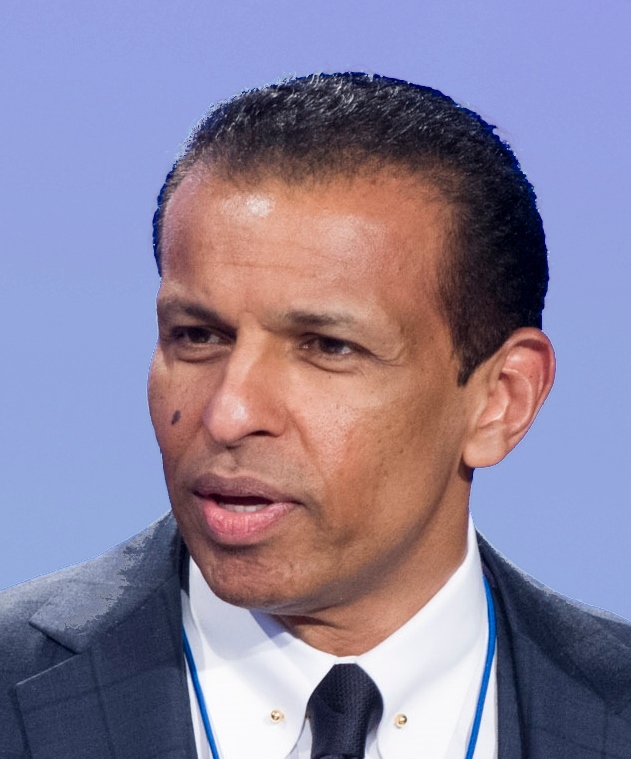Top Traders in UAE
The United Arab Emirates has rapidly established itself as one of the world’s leading financial centers, attracting both global investors and homegrown talent. Dubai and Abu Dhabi are now key hubs where international capital flows intersect with regional innovation and discipline. Within this dynamic environment, top traders in the UAE – such as Mickey Jagtiani, Hussein Sajwani, and Sunny Varkey – showcase unique strategies that blend global macro analysis, day trading precision, and strong risk management. Their approaches highlight how the UAE is shaping its own place in global markets while offering valuable lessons for traders worldwide.
Mickey Jagtiani
Mickey Jagtiani is a well-known trader and investor, the founder and manager of the hedge fund MJ Capital.
He was born in India (Bombay, now Mumbai) into a family of businessmen. His brother is Tony Jagtiani, a major retail entrepreneur in Dubai (founder of the Landmark Group chain).
He did not follow in his family’s footsteps into traditional business but instead became interested in financial markets. He started his career from the bottom in London, working as a courier for a brokerage firm while simultaneously studying trading.
Thanks to his determination and talent, he quickly progressed from a courier to a trader. He developed his own disciplined strategy based on thorough analysis and risk management.
In 2011, he founded his hedge fund, MJ Capital, in London, which specializes in global macro strategies and equity trading.
He is known as a very aggressive yet calculated trader. He makes large bets based on macroeconomic analysis and global trends, often taking contrarian positions.
He gained worldwide media attention after earning $70 million in a single day (October 26, 2022) from the sharp decline in Meta Platforms (Facebook) stock. He correctly predicted the market’s negative reaction to the company’s weak quarterly reports and took a large short position.
His personal fortune is estimated to be hundreds of millions of dollars.
Principles of Mickey Jagtiani That Can Be Applied to Investing
Start Small and Scale Up (Start Small, Think Big):
- His Story: He started with one small children’s goods store in Bahrain with a borrowed $6000.
- Application in Trading/Investing: Don’t start with large amounts. Begin with small capital, hone your strategy on a demo account or with insignificant sums. Only after confirming its effectiveness should you gradually increase your volumes.
Understand the Market and Meet Demand:
- His Story: He identified a gap in the market for children’s goods in the Persian Gulf region and capitalized on it.
- Application: Instead of blindly following trends, try to analyze why a particular stock, currency, or commodity is rising or falling. Understanding the fundamental reasons behind price movements (supply, demand, macroeconomics) is the key to success.
Diversification and Building a Conglomerate:
- His Story: Landmark Group started with children’s goods and now includes clothing brands (Splash, Iconic), footwear (Shoe Mart), furniture (Home Centre), hypermarkets (Centrepoint), and much more.
- Application: This is the classic principle of “Don’t put all your eggs in one basket.” Build a diversified investment portfolio consisting of different asset classes (stocks, bonds, commodities) and across different economic sectors.
Perseverance and Risk-Taking:
- His Story: He dropped out of school, worked as a taxi driver, and then risked everything to start his own business.
- Application: In the markets, there will be both profits and losses. It’s important to be psychologically resilient, learn from your mistakes, and not abandon a proven strategy because of a series of failures. However, risks must be manageable (see point 1).
Adaptability and Long-Term Vision:
- His Story: His business survived several oil crises, wars in the region, and changing consumer habits. He always adapted and looked forward.
- Application: Markets change. A strategy that worked yesterday may not work tomorrow. It is important to constantly learn, adapt your approaches, and have a long-term plan, rather than chase quick profits.
Here are three key lessons from Mickey Jagtiani that are consistently evident in his interviews, lessons, and public speeches:
Lesson 1: Risk Management is Not an Option—It’s the Only Thing That Matters
The Essence of the Lesson: The main goal of trading is not to make as much money as possible, but to preserve capital and stay in the game for the long term. Without capital, you cannot execute trades.
How this is implemented in practice:
- Position Sizing: Never risk a significant portion of your deposit on a single trade. A standard rule he advocates is to risk no more than 1-2% of total capital per trade.
- Stop-Loss is Your Best Friend: Every trade must have a predetermined stop-loss level—a point at which you cap your loss and exit the trade. This prevents a small drawdown from turning into a catastrophic one.
- A Thought Experiment: “Imagine your capital is air, and you are a diver. Without air, you cannot surface. Your task is not to use all your air on one deep dive.”
Lesson 2: Trade the Plan, Don’t Predict the Market
The Essence of the Lesson: The market is unpredictable. Instead of trying to guess where the price will go (which is impossible to do consistently), you need to have a clear trading plan for all possible scenarios. A plan eliminates emotions—the trader’s worst enemy.
What a trading plan consists of:
- Clear Entry Conditions: The specific criteria for entering a trade (e.g., a breakout of a resistance level with significant volume, a specific chart pattern).
- Profit-Taking Point (Take Profit): A predetermined target where you lock in profits.
- Exit Point with a Loss (Stop Loss): As in Lesson #1.
- Trading Journal: Mandatory logging of all trades with analysis: why you entered, why you exited, what emotions you felt. This allows you to learn from your mistakes and improve your plan.
Key quote in spirit: “I don’t know where the market will go. But I know what I will do in response to any of its movements.”
Lesson 3: Discipline and Psychology are 90% of Success
The Essence of the Lesson: The best strategy in the world will be unprofitable if used by an undisciplined trader. Greed, fear, hope, stubbornness—these emotions cause you to break your own rules and lead to financial loss.
Practical manifestations:
- Accepting Losses: A professional trader is not afraid of losses. They perceive them as the cost of doing business, as a fee for the opportunity to catch a big profitable trade. It is important to cut losses quickly and without hesitation.
- Do Not “Average Down” in a Losing Trade: Buying more of an asset that is already in drawdown to lower the average entry price is a deadly habit for most traders. It contradicts the stop-loss rule.
- No Revenge Trading: After an unsuccessful trade, you must not immediately jump back into the market to “recoup your losses.” This leads to emotional, ill-considered decisions and even greater losses. After a series of losses, you need to take a break.
Hussein Sajwani
Hussein Sajwani is a famous retail trader from the UAE, who became a celebrity in the world of day trading thanks to his incredibly profitable and risky trades on the German DAX index.
He was born in Dubai (UAE) in 1986 or 1987. Hailing from a wealthy family, his father is a successful businessman. He studied finance at Boston University (USA).
After university, he returned to Dubai and began working in the family business, which was related to real estate and catering. However, his true passion has always been financial markets.
He started actively sharing his trading results on social media (primarily on Instagram and X (Twitter)). His fame exploded after a series of incredibly successful trades on DAX index futures.

He became famous for screenshots of his accounts showing profits of millions of dollars in just a few minutes. One of his most famous records is earning $20 million in a single day in 2024.
He leads an extravagant lifestyle, showcasing his luxury cars (such as a Rolls-Royce), yachts, and expensive watches. This is part of his personal brand.
Here are the key elements and trading strategies of Hussein Sajwani, compiled from his numerous interviews, educational materials, and social media posts.
- Philosophical Foundation: “The Radical Way” Sajwani emphasizes not a specific indicator or pattern, but rather mindset and psychology. His approach can be called value investing in the context of short-term trading.
- Trading Value: He doesn’t trade just for the sake of trading. He looks for areas on the chart where the price offers a “good deal”—zones where the market is likely to reverse or continue a strong move. This often happens near key levels.
- Discipline and Patience: He can wait for hours for his ideal setups without making a single trade. His motto: “I don’t trade to trade; I trade to earn.”
- Responsibility: He never blames the market, news, or other participants for his losses. He takes full responsibility.
- Key Elements of His Trading Strategy
Market Analysis and “Storytelling”
Sajwani does not look at the chart in isolation. He builds a “story” of the market:
- Higher Timeframe (HTF) Analysis: He always starts with the daily (D) and 4-hour (H4) charts to determine the overall trend and key levels.
- Key Levels: He identifies the most obvious and important support and resistance levels on the HTF. These levels are the foundation of his “storytelling.”
- What is the price doing at these levels? All his trading revolves around the price’s reaction to these key levels. He looks for signs of absorption, deceleration, and a change of character.
His two main setups:
- “Boomerang” / Bounce from a Level:
- The price approaches a key support level (in an uptrend) or resistance level (in a downtrend) on the HTF.
- He looks for reversal signs right at the level—this could be a Price Action pattern (Pin Bar, engulfing candle, false breakout) or simply a strong bullish/bearish candle closing in the desired direction.
- “Sweep & Reversal”:
- A more aggressive and precise setup. The price doesn’t just reach a level; it sharply “sweeps” the liquidity located beyond the obvious level (stop-losses of traders clustered there).
- After a rapid breakout (sweep), an immediate strong move in the opposite direction follows. This is a sign that large players (smart money) have taken the liquidity and are now moving the price in the reverse direction.
Risk Management
This is perhaps the most important aspect of his success.
- Position Sizing: He always knows what percentage of his account he is risking in a single trade (usually very little, 0.5%-1%).
- Stop-Loss: He NEVER moves his stop-loss into a loss. His stop is set immediately upon entering the trade and remains in place. If the price hits it, the trade is closed. The entry point must be so precise that the stop is very tight.
- Take-Profit: He uses a trailing stop mechanism (moving the stop behind the price) to stay in the trend as long as possible. He does not set a fixed take-profit but lets the profits run.
- Psychology and Workflow
- Every evening he does his “homework”—analyzes the daily charts, marks key levels for the next day, and plans possible scenarios.
- He meticulously keeps a journal, recording not only numbers but also his thoughts, emotions, and reasons for each trade.
Here are three key lessons that are the cornerstone of Hussein Sajwani’s trading philosophy:
Lesson 1: Trade Only From Key Levels
This is perhaps the most important and recurring principle in Sajwani’s strategy. He teaches that the market does not move chaotically, but from one significant level to another.
- The Essence of the Lesson: You don’t need to trade every price movement. The market spends most of its time in consolidation (a flat). The trader’s task is to patiently wait for the price to approach pre-defined key levels (support and resistance levels) and only look for entry points there.
- Why It’s Important:
- High Probability of a Bounce: At these levels, large players (banks, market makers) make decisions to buy or sell, which increases the chance of a reversal or continuation of the movement.
- Better Risk/Reward Ratio: A stop-loss can be placed very close (beyond the level), and a take-profit can be set at the next key level, which potentially offers a large profit with a small risk.
- Discipline: This approach teaches patience and selectivity, which is critical for success.
- How to Apply: Instead of trying to catch every move, draw horizontal lines on the chart at previous highs, lows, and areas where the price has reversed multiple times. Trade only when the price reacts to these levels.
Lesson 2: Look for Confirmation — Not Anticipating, But Reacting
Sajwani constantly emphasizes the difference between anticipating and reacting. A bad trader assumes a reversal will happen and enters early. A good trader waits for the market to show its strength and intentions.
- The Essence of the Lesson: Never enter a trade early because you think the level will hold. Enter only after you have received confirmation in the form of a price action pattern.
- What Constitutes Confirmation (According to Sajwani):
- Patterns like Pin Bar, Engulfing, Inside Bar. These candlestick formations show that the pressure from buyers or sellers has exhausted at the level and a reversal has begun.
- Break of Structure (BOS): For example, after a downtrend, the price forms a higher low (HL) and then breaks the previous high.
- Why It’s Important:
- Eliminates Subjectivity: You are not guessing; you are following clear rules.
- Filters False Signals: Many breakouts turn out to be false. Confirmation in the form of a candlestick pattern helps distinguish a true reversal from a false one.
- How to Apply: Wait for the price to touch a key level (Lesson 1), and then look for one of the known reversal or continuation patterns. Enter the trade only after the confirming candle has closed.
Lesson 3: Money Management and Psychology Are 90% of Success
Sajwani says that any simple level-based strategy can be profitable if the trader has iron discipline and strictly manages risks.
- The Essence of the Lesson: Technical analysis is just a tool. What’s much more important is how you manage your money and your emotions (greed and fear).
- Key Principles:
- Risk no more than 1-2% of your account per trade. This will protect you from quickly blowing up your account during an inevitable series of losses.
- Always maintain a risk/reward ratio of at least 1:2. This means if you risk $50, your profit target should be at least $100. This way, even with a 50% win rate, you will be profitable.
- Keep a trading journal. Record every trade: the reason for entry, emotions, result. Analyze mistakes and improve.
- Accept losses as part of the game. You cannot avoid stop-losses. A losing trade is the fee you pay for the opportunity to catch a big profitable one.
Sunny Varkey
Sunny Varkey is a well-known private trader and investor who gained popularity through his presence on social media (primarily on Instagram and X (Twitter)), where he shares his trades, market analysis, and investment philosophy.
He was born and raised in India (Kerala). He moved to the United Arab Emirates (Dubai) in his youth, where he initially worked in the family real estate business.

His interest in the stock market awakened after the 2008 financial crisis. He began by independently learning the basics of investing and trading, reading books and practicing on demo accounts.
Here is a detailed description of Sunny Varki’s trading strategy.
Core Philosophy and Principles
- Intraday Trading: The strategy is designed exclusively for intraday trading (day trading). All positions are opened and closed within a single trading session. Holding positions overnight is prohibited.
- Trend Trading: The strategy follows the trend identified at the beginning of the day. It does not attempt to catch reversals or trade against the momentum.
- High Discipline: This is a system with clear rules for entry, exit, and risk management. There is no room for intuition or deviations from the rules.
- Key Levels: The entire strategy is built around identifying and using key support and resistance levels, as well as a “reference point” — the Day’s Opening Price (DOP).
Instruments and Timeframes
- Currency Pairs: Major pairs such as EUR/USD, GBP/USD, USD/CHF, USD/JPY. Preference is given to pairs with low spreads.
- Timeframes:
- H1 (Hourly): For determining the overall context and trend.
- M15 (15-minute): The primary timeframe for finding precise entry signals.
- Indicators: Indicators are NOT used. The strategy is purely price action-based and relies on levels.
Step-by-Step Strategy Algorithm
Step 1: Determining the Day’s Trend
- Time: Wait for the start of the European session (approximately 09:00 Moscow time).
- Definition: Compare the current price to the Day’s Opening Price (DOP) — the price at the start of the trading session (00:00 GMT / 03:00 MSK winter, 04:00 MSK summer).
- Bullish Trend: If the price is trading ABOVE the DOP.
- Bearish Trend: If the price is trading BELOW the DOP.
- The trend identified at the beginning of the day sets the direction for all trades that day. If the price is above the DOP, we only look for long (buy) signals. If it is below, we only look for short (sell) signals.
Step 2: Finding an Entry Point
The entry occurs after a pullback to a key level.
- Wait for a pullback: Within the overall trend, the price should pull back to one of the following levels:
- The Day’s Opening Price (DOP) itself.
- The previous local low/high (for a bullish/bearish trend respectively), which has become a new level of support/resistance.
- A moving average (often EMA with a period of 50 or 100 on M15; although the classic strategy uses no indicators, many traders add it for visualizing a dynamic level).
- Entry signal: Wait for the price to touch the level and start reversing in the direction of the main trend. The exact entry is executed on the first closed bullish/bearish bar after the pullback.
- For a Buy (Long): A bullish bar (closing near its high) after a pullback to support.
- For a Sell (Short): A bearish bar (closing near its low) after a pullback to resistance.
Step 3: Risk Management (Money Management)
- Stop-Loss (SL): Placed 10-15 pips below/above the local low/high formed during the pullback. This is a hard stop that protects capital if the pullback turns into a reversal.
- Take-Profit (TP): The classic rule is a risk/reward ratio = 1:2 or 1:3. For example, if the stop-loss is 15 pips, the take-profit is set at 30-45 pips.
- Alternative method: Traders can take partial profits (e.g., 50% of the position) when a 1:1 ratio is reached, and then move the stop-loss on the remaining portion to break-even and trail it with the trend to catch a larger move.
Dependence on Volatility: On days with very low volatility and sideways movement (flat), the price can chop around the DOP for hours, providing no quality signals. It is better not to trade on such days.
False Breakouts: The Day’s Opening Price can act as a false level, with the price constantly breaking through it and then returning.
Requires Discipline: Strict adherence to the rules is mandatory. Breaking the rules leads to losses.
Important Notes
- It is NOT Scalping: This is not scalping. Trades can last from 30 minutes to several hours.
- Backtesting: Before trading with real money, be sure to test the strategy on a demo account for 1-2 months to get used to its rules and get a feel for how it works.
- Adaptation: Many traders adapt the basic rules to their own style (for example, by adding an EMA filter or using a different method to determine the trend), but the core mechanics (pullback to a level + price action entry) remain unchanged.
In conclusion, the Sunny Varki strategy is a classic, time-tested Price Action system for day trading that teaches discipline and trend following.
Here are three key trading lessons from Sunny Varkey:
Lesson 1: Risk Management is Not an Option, It’s EVERYTHING
The core of the lesson: The most important skill for a trader is not the ability to find profitable trades, but the ability to survive and protect their capital. Without capital, it is impossible to trade.
What this means in practice:
- Risk per trade: Never risk more than 1-2% of your total trading capital on a single trade. This is the golden rule that will protect you from ruin even during a long series of losses.
- Stop-loss is your best friend: Every trade must have a predetermined stop-loss level—the point where you admit the mistake and exit the position. Sunny emphasizes that a stop-loss is not a failure, but an insurance policy.
- Risk-to-reward ratio (R/R): Only enter trades where the potential profit is at least 1.5-2 times greater than the potential loss (R/R of 1:1.5 and higher). This means that even if half of your trades are losing, you can still be profitable.
His famous quote: “You can be right only 50% of the time and still make money if your winning trades bring in more than your losing trades take away.”
Lesson 2: A Trading Plan is a Trader’s Bible. Deviating From It is a Sin
The core of the lesson: Trading without a plan is gambling. A trading plan is a set of strict rules that eliminates emotion from decision-making.
What this means in practice:
- Clear entry criteria: The plan must describe in detail the conditions under which you enter a trade (e.g., a specific chart pattern, indicator readings, a breakout level).
- Clear exit criteria: Predetermined take-profit and stop-loss levels. No emotional decisions like “I’ll wait a bit longer” or “I’ll close early to lock in a small profit.”
- Capital management rules: The plan includes the rules from Lesson 1 (position size, % risk).
- Trading journal: Sunny insists on keeping a journal to analyze every trade: why you entered, why you exited, what emotions you felt. This allows you to find and correct recurring mistakes.
His famous quote: “Plan your trade and trade your plan. If you don’t write down your plan, it doesn’t exist.”
Lesson 3: Discipline and Psychology are 80% of Success
The core of the lesson: The toughest battle in trading doesn’t happen in the market; it happens in your head. Fear, greed, hope, and revenge are a trader’s main enemies.
What this means in practice:
- Accepting losses: A professional trader treats losses as the cost of doing business. They do not try to revenge trade and do not hold onto a losing trade hoping it will break even (hope).
- Following the plan: Even when it seems like “this is the chance to hit the jackpot,” a disciplined trader does not enter a trade if it doesn’t conform to their plan.
- Emotional control: After a big win, don’t increase your position size due to euphoria. After a series of losses, don’t go “all-in” to win it back. You need to maintain a steady psychological state.
- Patience: It’s much more important to not be in the market constantly, but to be able to wait only for those setups (trading scenarios) that perfectly match your plan.
His famous quote: “The market is always right. Your opinion means nothing. Your job is to react to the market’s actions, not to predict them.”

